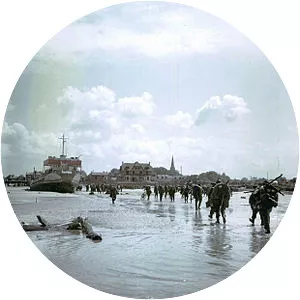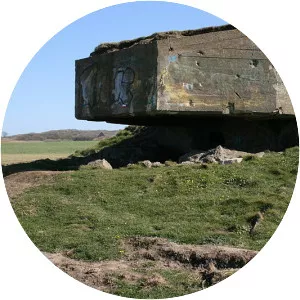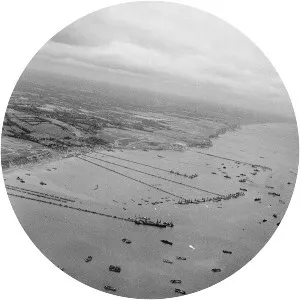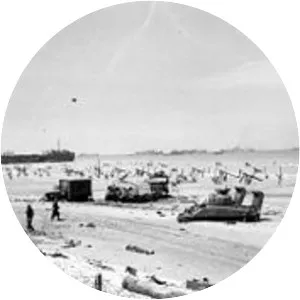
Omaha Beach
| Use attributes for filter ! | |
| Locations | Sainte-Honorine-des-Pertes |
|---|---|
| Saint-Laurent-sur-Mer | |
| Vierville-sur-Mer | |
| France | |
| Date | June 6, 1944 |
| Year | 1944 |
| Result | Allied |
| Did you know | The Americans suffered 2,400 casualties at Omaha on June 6, but by the end of the day they had landed 34,000 troops. |
| Date of Reg. | |
| Date of Upd. | |
| ID | 1112500 |
About Omaha Beach
Omaha Beach is a landing area in Normandy, northern France, used by Allied forces in the WWII D-Day invasion. Today, the beach is dotted with the remains of German bunkers. On the shore, the stainless-steel sculpture Les Braves commemorates American soldiers. Behind the beach is the Musée Mémorial d'Omaha Beach, also documenting the invasion. Nearby, the Overlord Museum displays WWII tanks, artillery and dioramas.
D-Day veteran Edward Gaines from Poole dies aged 98
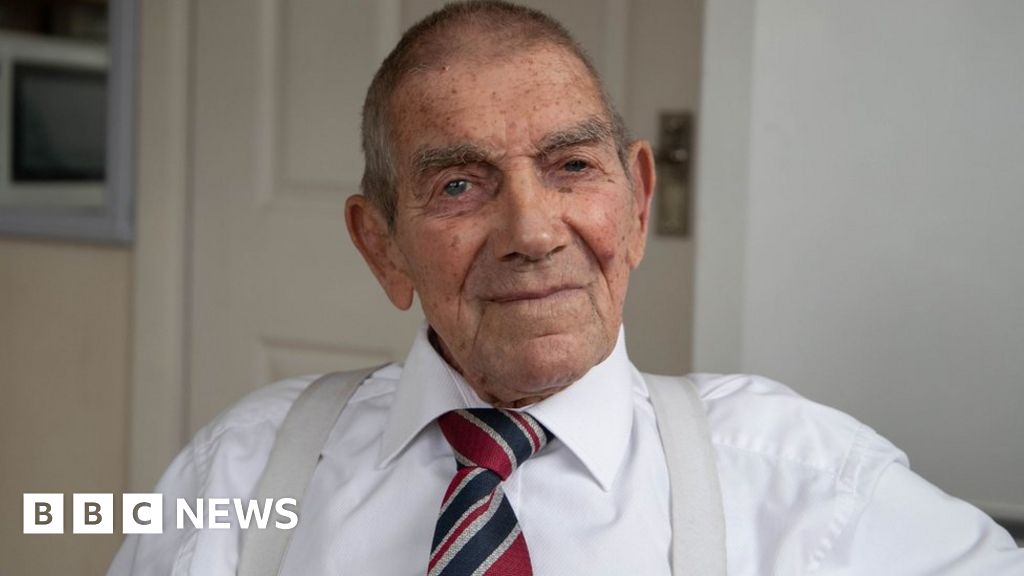
...By PA Media & Toby WadeyBBC NewsOne of the last surviving D-Day veterans who transported dynamite to Omaha Beach has died aged 98...
I survived D-Day - my first champagne had
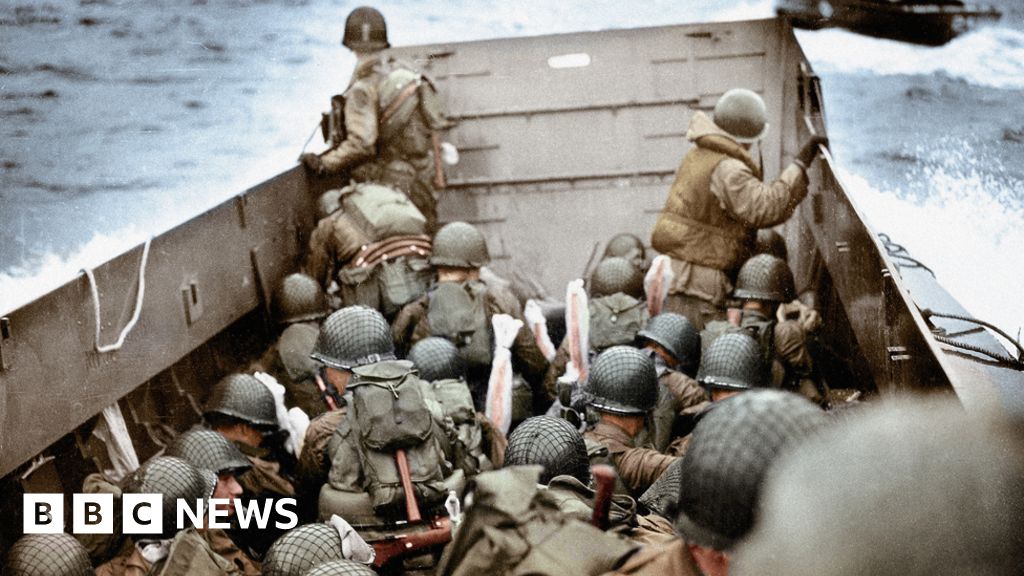
... June, probably around 06:30 PM, it was time to go, and here we were landing at Omaha Beach with the water up to the neck and machine-gun fire on all sides...
D-Day: What happened during the landings of 1944?
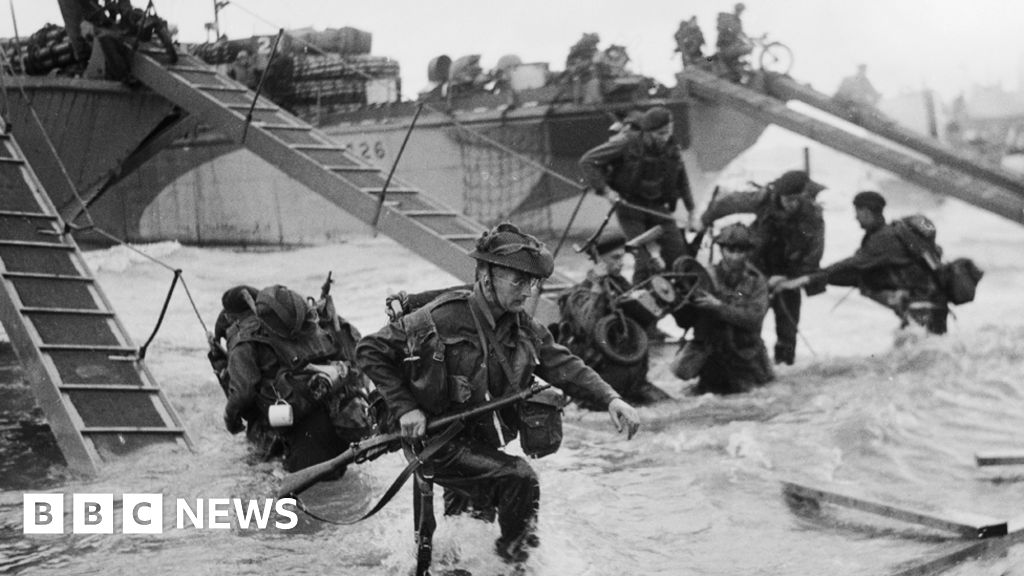
... But at nearby Omaha Beach, the US force suffered serious losses...
D-Day: 10 things you might not know about the Normandy invasion
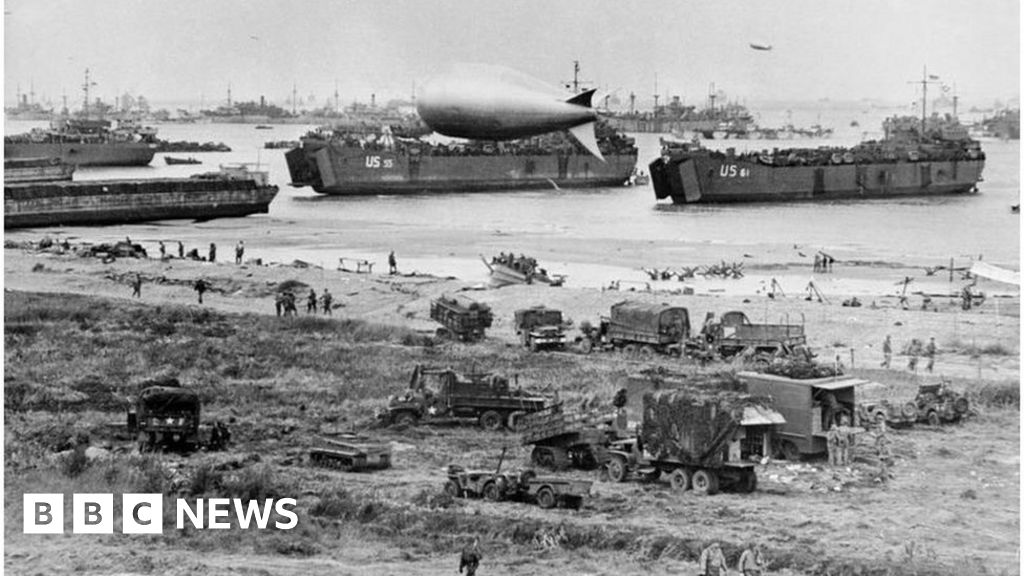
...D-Day on Omaha Beach in Normandy On 6 June 1944, British, US and Canadian forces invaded the coast of Normandy in northern France...
D-Day: Veterans and world leaders mark 75th anniversary

... Pride of the nation Meanwhile, Mr Trump accompanied Mr Macron at a ceremony at the US war cemetery at Omaha Beach, Colleville-sur-Mer...
Sheffield bomber crash: Fly-past due on 75th anniversary

... The headstones of Staff Sergeant Harry W Estabrooks, Sergeant Maurice D Robbins and Sergeant Charles H Tuttle were dressed on Friday with sand from Omaha Beach in Normandy, France...
D-Day: What happened during the landings of 1944?
Commemorations for the 75th anniversary of the D-Day landings, also known as the Normandy Landings , take place This Week .
The Queen , US President Donald Trump and other heads of state are all due to attend events in Portsmouth in the UK.
So, what happened in June 1944 during World War Two?
What was D-Day?Troops from the UK, the US, Canada, and France attacked German forces on the coast of northern France, on 6 June 1944.
It was the largest military naval, air and land operation ever attempted and marked the start of The Campaign to liberate Nazi-occupied north-west Europe.
D-Day involved the simultaneous landing of tens of thousands of troops on five separate beaches in Normandy.
More Than a year in the planning, D-Day was originally set to start on 5 June, judged to be The Most likely date to combine calm seas, a full moon and low water at First Light . However, storms meant it was delayed by 24 hours to 6 June.
D-Day is a military term for The First day of an operation.
What happened on The Day ?Airborne troops were dropped behind enemy lines in the Early Hours , while thousands of ships gathered off the Normandy coast for the main attack.
Though they were expecting an invasion, German military leaders believed the initial attacks were only a diversionary tactic.
A deception plan in The Weeks ahead of The Attack had led them to expect the main invasion Further Along the coast.
The Surprise element helped British troops establish a foothold on a beach codenamed Gold.
In addition, Canadian forces established themselves on another beach - Juno - and The British got on to Sword Beach .
American Soldiers also managed to land on the westernmost beach - Utah - Without major casualties.
But at nearby Omaha Beach , the US force suffered serious losses. The naval barrage and bombing raids on the German defences were ineffective and The Americans encountered a crack division of German troops.
Shortly After Midnight , three US and British airborne divisions, More Than 23,000 men, took off to secure the flanks of The Beaches . Myriad naval vessels and Landing Craft gathered at a location in the Channel dubbed "Piccadilly Circus ".
From 06:30, The First five assault divisions were delivered to their beaches Under Cover of a naval bombardment.
Throughout The Day troops landed on The Beaches . By midnight, the Allies had secured their beachheads and pushed further inland from Gold, Juno , Sword and Utah .
How many troops took part?Up to 7,000 ships and Landing Craft were involved, delivering a total of 156,000 men and 10,000 vehicles to The Five beaches along the carefully selected stretch of the Normandy coast.
The landings would not have been possible Without the support of massive air and naval forces, which were much stronger than the Germans'.
But on D-Day alone, as many as 4,400 troops died from the combined allied forces. Some 9,000 were wounded or Missing .
Total German casualties on The Day are not known, but are estimated as being between 4,000 and 9,000 men.
Thousands of French civilians also perished, mainly as a result of bombing raids carried out by allied forces.
What happened after D-Day?Although they had got a foothold in France by the end of D-Day, allied forces were for a while At Risk of being pushed back into The Sea .
They had to keep building up their forces faster than the Germans could reinforce theirs.
Progress through The Narrow lanes and staunchly defended towns of Normandy was slow.
But now outnumbering their enemy and supported by their air superiority, they were able to overcome the considerable Resistance - though at a heavy price.
By the time they liberated Paris, in late August 1944, about 10% of the two million allied troops who had by then reached France were dead, wounded or Missing .
75th anniversary of d-day, d-day, world war two
Source of news: bbc.com
